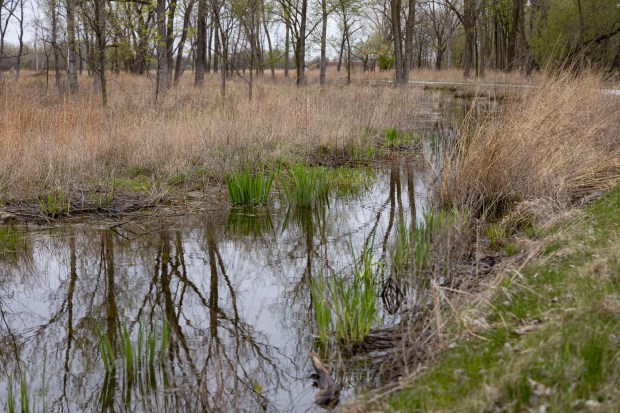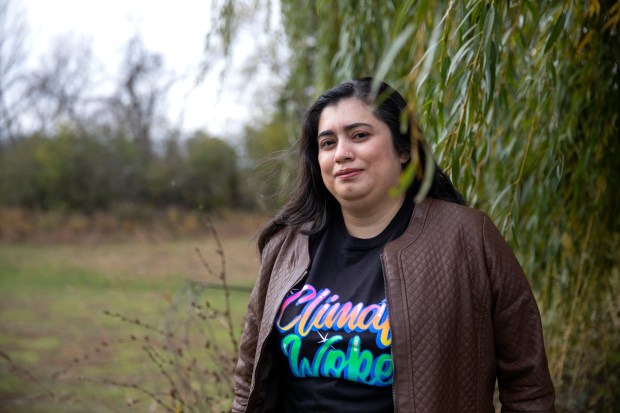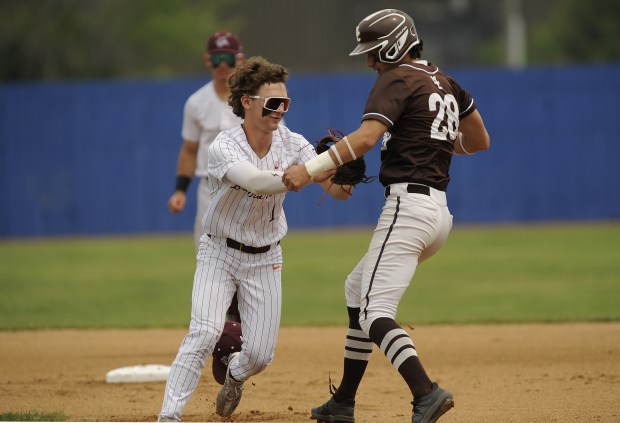After a U.S. Supreme Court ruling last spring left wetlands vulnerable to development, a coalition of environmental activists hopes a new bill can close the gaps in Illinois.
Sen. Laura Ellman, D-Naperville, and Rep. Anna Moeller, an Elgin Democrat, introduced companion bills Tuesday that would establish a permitting program to protect wetlands from pollution and draining.
Illinois is one of several states with no statewide protections for wetlands on private land. It relied on federal Clean Water Act protections until the conservative court severely curtailed them in Sackett v. EPA, a ruling that has been celebrated by real estate developers and industry but has greatly concerned environmentalists.
“We’re not trying to write or pass the perfect wetlands law of our dreams as conservationists. What we’re trying to do is step up where the federal government has now stepped back,” said Paul Botts, the executive director of the Wetlands Initiative, a Chicago-based conservation organization that advised on the bill.
If passed, the Wetlands and Small Streams Protection Act will empower the Illinois Department of Natural Resources to regulate land use around the state’s remaining wetlands, which can be valuable natural defenses against flooding and water pollution.
Natural climate solution at risk
The Supreme Court’s ruling in Sackett v. EPA opened the doors for developers to freely build next to and on top of wetlands on private land, so long as there is no surface connection between them and flowing waterways.
Ecologists say this rationale ignores the latest scientific understanding of wetlands. The ecosystems absorb water, so surface connections can appear or disappear based on rainfall patterns. Water largely flows from wetlands into bodies of water via underground networks.
“This ruling immediately kicked off a conversation in our groups: With the absence of this federal law, what do we need to be doing in Illinois?” recalled Eliot Clay, land use programs director at the Illinois Environmental Council. “We all got on emails and phone calls and were like, ‘All right, let’s meet and figure out what we’re going to do about this.’”
The Wetlands Initiative usually does not engage in policy, but after the court’s decision in May, it felt it had no choice.
Illinois has lost approximately 90% of its wetlands since 1818 as they’ve been filled and drained to make room for buildings and farmland, according to the state’s Department of Natural Resources. With them, the state has lost an important flood and pollution control mechanism that will only become more important as climate change worsens.
“If there’s only one time we’re going to do this, now is that time,” said Botts, the initiative’s executive director.
Annual total precipitation has increased 15% statewide between 1895 and 2019 and will continue increasing over the next 30 years as climate change intensifies, the natural resources department reports. Illinois’ stormwater systems are not prepared to handle this influx of rain, which will cause increasingly severe flooding of houses, roads and farmland, according to the University of Illinois Extension.
At Tuesday’s news conference, Waukegan resident and community organizer Celeste Flores recalled how a “100-year flood” destroyed her possessions and devastated public infrastructure in 2016.
Flores expressed concern that these supposedly once-in-a-generation floods and the expensive recovery efforts that follow “will feel like the new cost and the new normal” as rainfall continues to surge. Low-income and Black and brown communities like those near contaminated industrial sites in Waukegan will suffer most, she said, since floodwater can pick up and carry nearby contaminants into homes.
Jess Whiston, a farmer in western Illinois, also spoke about how a severe rainstorm in 2015 nearly drove the farm that has been in her family for three generations out of business.
“It was the first time since my grandparents owned the farm that this had happened,” said Whiston. “Contaminated runoff from surrounding farms, including animal farms, meant we couldn’t harvest anything that had been in contact with that floodwater. We lost 100% of our crops that year. The financial blow was devastating to a smaller farm operation like ours.”
While Whiston found her way through 2015, she has encountered increasing instances of extreme weather every year since and started renting 15 acres of farmland in a less flood-prone area to hedge potential losses.
Heavy rain also carries excess fertilizer from farms into creeks and streams, all the way down to the Gulf of Mexico where it contributes to an oxygen-void pool that cannot support aquatic life. Illinois is one of the nation’s largest contributors to this “dead zone” that threatens the livelihood of Gulf fishermen. Along the way, it contaminates the local water supply too.
All the while, wetlands are natural filters and sponges that can catch pollutants before they enter waterways and absorb excess water to prevent flooding. The bill will require the natural resources department to protect the many wetlands without a visible surface connection to waterways that play these vital roles by establishing a statewide permitting system similar to the federal one that was abolished in May.
“I don’t know how often it is that you can point to one kind of single policy and can address so many different problems all at once, and wetlands really are that. It’s amazing,” said Robert Hirschfeld, director of water policy at the Prairie Rivers Network, who spoke about the issue in late February before the bill was introduced.

A message to other states
Though the coalition and sponsors anticipate some opposition from developers and industry groups, they believe the bill offers clarity and have guarded optimism it will be signed into law. Hours after the news conference, the Senate bill passed out of the Judiciary Committee in a 6-3 vote along party lines, with Democrats in favor. The House bill was assigned to the Energy and Environment Committee on Tuesday and awaits a vote.
“The Supreme Court ruling muddied the waters about which streams and wetlands are or are not protected. Our proposed legislation will provide certainty and clear those waters with clear, long-term guidance that allows businesses and developers to plan accordingly and an efficient, fair, permitting process,” said Ellman, the Naperville senator.
One of Illinois’ neighbors, on the other hand, has decided to take a very different legislative approach following the Supreme Court ruling.
Last month, the Indiana legislature fast-tracked a bill that reduced permitting requirements for wetlands housing threatened or endangered species. This comes after the state curtailed protections for all other wetlands in 2021.
Since watersheds do not know state borders, Indiana’s laws will have a direct impact on the water quality in Illinois and surrounding states. This shows the undue environmental harm that states can impose on each other without a uniform national policy and makes the stakes higher for the Illinois bill.
“If we, in Illinois, have to deal with more pollution coming our way because some other state wants to let polluters run amok, all the more reason why we need to protect and build back our own wetland complexes,” Hirschfeld said.
As more states determine how they will manage wetland protections post-Sackett v. EPA, the coalition also hopes this bill sends a larger message about the important role state policy can have in responding to federal politics.
“A lot of people in Illinois saw (the loss of wetland protections) as a direct result of a Trump-appointed Supreme Court majority and this is an opportunity for state lawmakers to actually have an answer to what is going on in D.C. right now,” said Clay, with the Illinois Environmental Council.
Indiana answered by leaning into the court’s anti-regulatory posture when it further stripped wetland protections last month. Meanwhile, the wetlands protection bill introduced Tuesday offers Illinois an opportunity to fill the void in wetlands protections left by the court and safeguard a critical ecosystem.





